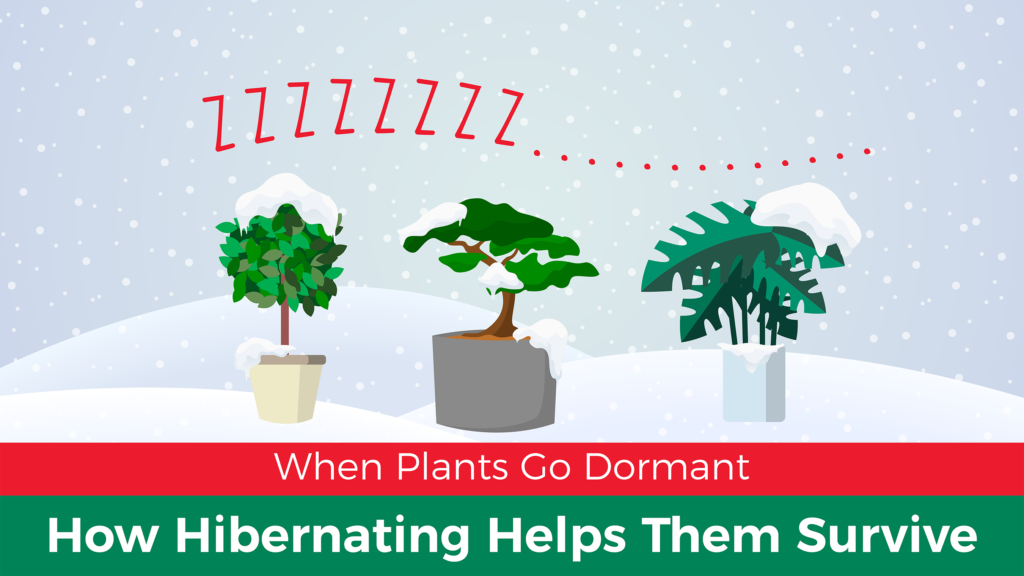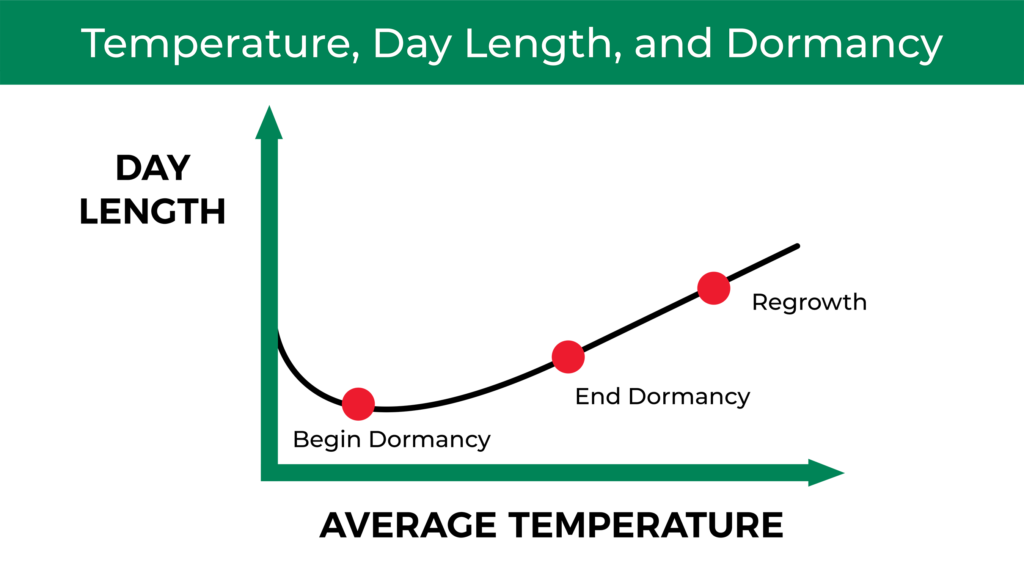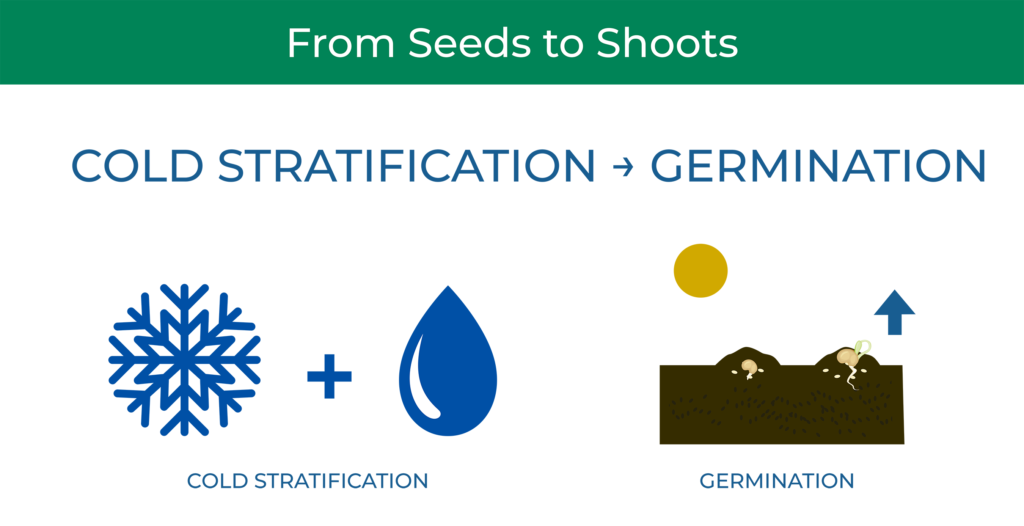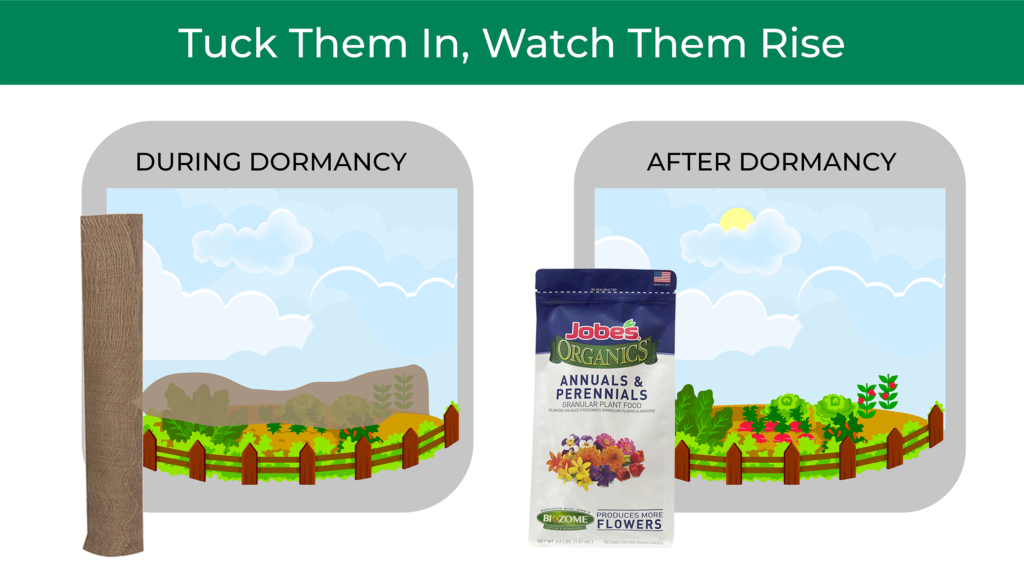Like a bear in hibernation, perennial plants take advantage of winter as a much-needed period of rest. Dormancy is your garden’s way to stay thriving during cold weather conditions – even if it’s not flourishing on the surface. With this in-depth look at dormancy, Jobe’s explains how your plants use this time to conserve energy until more favorable growing conditions arise.
What Is Dormancy?
All living things have some sort of biological clock. For humans, it’s the fatigue we feel each night declaring that it’s time to sleep (or to go “dormant”). For plants, dormancy declares when to prepare their soft tissues for freezing temperatures, dry weather, or water and nutrient shortage. Instead of exerting energy in an attempt to grow, they know to stop growing and conserve energy until mild weather returns. This period of arrested growth allows roots to continue developing and thriving.
When It’s Time to Sleep
Just like us, plants are deeply affected by temperature and sunlight, which serve to signal that winter is coming. After Daylight Savings in late autumn, for instance, it gets darker much earlier – and as a result, we start to become groggy much earlier than our usual bedtimes. Plant growth slows as day length shortens, thus commencing the dormancy process. Longer periods of darkness and chilly weather around this time clearly communicate to your garden that winter is coming.
If plants were to remain actively growing in the winter, water stored in stems, leaves, and trunks would freeze and cause harm. This effect is most salient on trees when an early freeze occurs before they are prepared; the bark suffers damage due to water in the outer layers freezing and expanding. The cold season reels back sunlight and freezes the ground, making water supply both scarce and difficult to collect.
When It’s Time to Wake
Eventually, spring will come around. Shorter nights mean more sunlight, which means encouragement for perennials to grow once again. But they won’t necessarily shoot up at the first sight of spring – depending on your climate, it can take weeks to for your garden to emerge from dormancy. You should trim back foliage to promote new growth, but otherwise, many outdoor plants require minimal maintenance. Consider adding a dose of Jobe’s fertilizer for enhanced regrowth.
However, there is the potential danger of plants breaking dormancy prematurely. It’s not uncommon for surprise warm spells to spring up new growth – which will have its life cut short when temperatures drop again. Therefore, it’s wise to keep your ground covered with mulch to help safeguard against the dramatic shifts in weather that cause these thaw-freeze cycles.
How Does It Work?
To be the greatest gardener you can be, it’s beneficial to know the inner workings of your plants – they’re living things just like us, equipped with the ability to endure trying conditions. So, there’s good reason for why they can go dormant all season and still thrive later.
Putting on the Brakes
Think of the most evident example of winter dormancy: your lawn. Each year, it eventually stops growing and turns brown after it’s been cold for long enough. Still, you can always count on it to come back (and turn green), ready for its weekly upkeep once again. Because the enzymes driving biochemical reactions don’t function well in winter, dipping temperatures and lack of sunlight slows plants’ metabolism. Photosynthesis and respiration decelerate, and growth halts.
Planting Memories, Springing Up
When seeds have been exposed to low temperatures for long enough, a process called cold stratification triggers the conclusion of dormancy. If environmental conditions are optimal at this time, the seeds can germinate. This is all managed by plant hormones. But how do they know when it’s time? Perennials have a temperature memory that tracks both time and temperature, ultimately allowing them to figure out how cold it has been and for how long. By keeping tabs on interactions among proteins, plants identify when to activate the core gene that breaks dormancy.
What Can I Do in the Meantime?
Importantly, perennials use winter dormancy to keep everything in order. Like our bodies restoring themselves when we sleep, their cell membranes are maintained, and proteins are broken down and remade. Even so, plants are not as autonomous as humans, so they can benefit from our help to stay protected. Applying a layer of hay or mulch helps hold in moisture and heat, or a plant protecting blanket can shield against frost or unfavorable weather. Whatever you choose, know that there are many options for extending your garden’s health into the winter.
Provide Premier Protection
Gardens possess more self-regulatory power than we often give them credit for. But even in the midst of winter dormancy, it doesn’t hurt to ensure that yours is doing the best it can. Jobe’s is here for your plants before, during, and after winter dormancy, with products like 100% natural burlap and protecting blankets to keep them warm, along with fabric pegs and durable garden staples to secure the coverage. And when springtime rolls around, make sure your blooms have the nutrients they need to flourish with perennial fertilizer spikes or granular.
Give your garden the protection it deserves throughout dormancy with our wide range of Jobe’s Organics products today!



